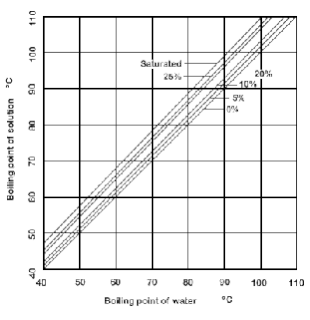
Dühring's rule is a scientific rule developed by Eugen Dühring which states that a linear relationship exists between the temperatures at which two solutions exert the same vapour pressure. The rule is often used to compare a pure liquid and a solution at a given concentration.
Dühring's plot is a graphical representation of such a relationship, typically with the pure liquid's boiling point along the x-axis and the mixture's boiling point along the y-axis; each line of the graph represents a constant concentration.
See also
References
- ^ Earle, Richard L.; Earle, M. D. (2004). "Evaporation". Unit Operations in Food Processing. The New Zealand Institute of Food Science & Technology (Inc.). Archived from the original on May 24, 2010. Retrieved March 15, 2009.
- Price, R. M. (2003). "Evaporation". RMP Lecture Notes. Christian Brothers University. Archived from the original on February 15, 2012. Retrieved March 15, 2009.
This thermodynamics-related article is a stub. You can help Misplaced Pages by expanding it. |
This chemistry-related article is a stub. You can help Misplaced Pages by expanding it. |
This engineering-related article is a stub. You can help Misplaced Pages by expanding it. |